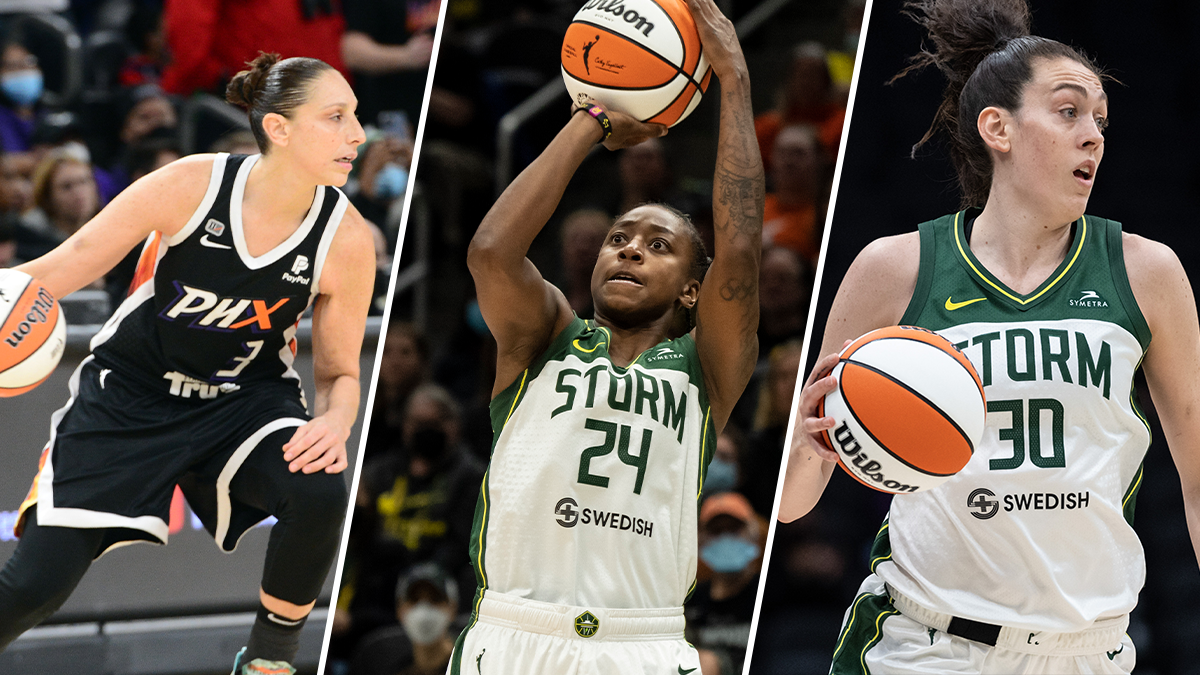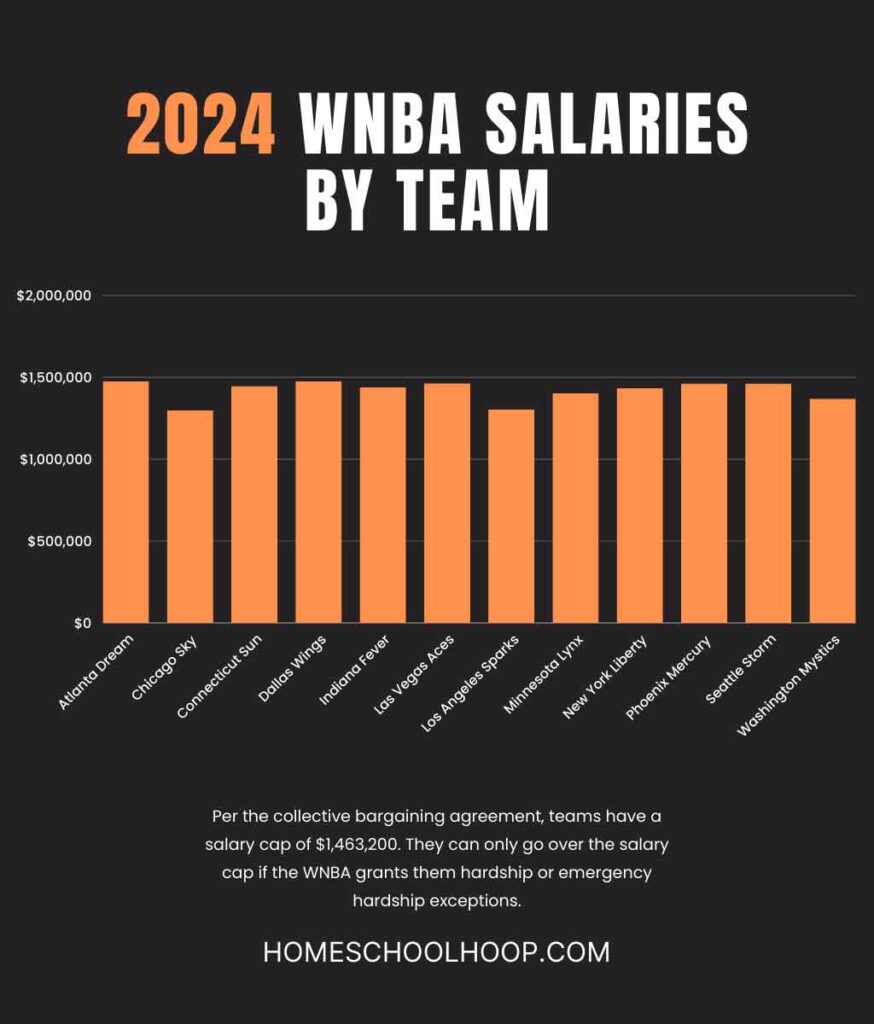What's The Highest WNBA Salary? Exploring The League's Top Earnings
Women's basketball continues to grow in popularity, and one of the most frequently asked questions about the WNBA is "what's the highest WNBA salary?" As the league progresses, player compensation has become a significant talking point. In recent years, there have been efforts to address pay equity and improve the financial landscape for athletes. This article aims to provide an in-depth analysis of the highest salaries in the WNBA, offering valuable insights into the league's economic structure.
Understanding the highest WNBA salary is not just about numbers; it's about recognizing the hard work, dedication, and talent that players bring to the court. The WNBA has taken strides to ensure that players receive fair compensation, which is vital for the league's long-term sustainability. As fans, it's essential to stay informed about these developments and appreciate the value of the athletes who compete at the highest level.
In this article, we will explore the current salary landscape in the WNBA, delve into the factors that influence player compensation, and highlight the league's efforts to improve pay equity. Whether you're a die-hard fan or new to the sport, this article will provide you with a comprehensive understanding of the WNBA's salary structure and its implications for the future of women's basketball.
Read also:Unveiling The Secrets Of Main Ivy A Comprehensive Guide
Table of Contents
- Introduction to WNBA Salaries
- The Highest WNBA Salary Record
- Understanding the WNBA Salary Cap
- Factors Affecting WNBA Salaries
- Comparison with NBA Salaries
- League Efforts to Improve Compensation
- Player Perspectives on Salaries
- Future Prospects for WNBA Salaries
- Statistics and Data on WNBA Salaries
- Conclusion and Call to Action
Introduction to WNBA Salaries
When discussing the WNBA, it's crucial to understand the league's salary structure. The WNBA operates under a collective bargaining agreement (CBA) that outlines player compensation, benefits, and other financial aspects. This framework ensures that players are compensated fairly based on their experience, performance, and contributions to the team.
How Salaries are Determined
Salaries in the WNBA are influenced by several factors, including player experience, position, and marketability. Rookie players typically start with a base salary, while veterans and star players can negotiate higher contracts. Additionally, the league has introduced new salary tiers to reward top performers and increase overall compensation.
The WNBA has also implemented a luxury tax system to manage team expenditures and maintain competitive balance. This system ensures that teams do not overspend on player salaries, while still allowing for competitive bidding for top talent.
The Highest WNBA Salary Record
As of 2023, the highest WNBA salary belongs to Brittney Griner, who signed a record-breaking contract with the Phoenix Mercury. Her annual salary surpasses the previous high set by Diana Taurasi, marking a significant milestone in the league's history. Griner's contract reflects her status as one of the most dominant players in the WNBA and highlights the league's commitment to rewarding top talent.
Other Notable Salaries
- Diana Taurasi: A veteran player with multiple championships and MVP awards, Taurasi remains one of the highest-paid players in the league.
- A'ja Wilson: As a rising star and key player for the Las Vegas Aces, Wilson has secured a lucrative contract reflecting her value to the team.
- Sue Bird: A legendary point guard, Sue Bird's salary has consistently been among the highest in the league due to her leadership and on-court contributions.
Understanding the WNBA Salary Cap
The WNBA salary cap plays a critical role in determining player compensation. The cap is set annually and varies based on league revenue and other financial factors. Teams must adhere to the cap when constructing their rosters, ensuring that player salaries remain within budget.
How the Salary Cap Works
Each team is allocated a specific amount of money to spend on player salaries. This cap is designed to promote competitive balance by preventing wealthier teams from dominating the league. Additionally, the cap includes provisions for exceptions, such as the ability to re-sign key players or sign veterans at reduced rates.
Read also:Lifting Life The Ultimate Guide To Transforming Your Everyday Routine
Recent changes to the CBA have increased the salary cap, allowing teams to offer higher contracts to top players. This adjustment reflects the league's efforts to improve player compensation and attract the best talent.
Factors Affecting WNBA Salaries
Several factors influence player salaries in the WNBA, including:
- Experience: Veteran players with extensive experience and proven track records typically earn higher salaries than rookies.
- Performance: Players who consistently perform at a high level and contribute to team success are rewarded with larger contracts.
- Marketability: Players with strong brand appeal and media presence may secure endorsement deals that supplement their base salary.
- Team Needs: Teams may prioritize certain positions or skills when allocating their salary cap, affecting individual player compensation.
Comparison with NBA Salaries
While the WNBA has made significant strides in improving player compensation, salaries in the league still lag behind those in the NBA. The average NBA salary exceeds $7 million per year, compared to the WNBA's average salary of around $80,000. This disparity highlights the challenges faced by women's sports in achieving pay equity.
Steps Toward Equality
The WNBA and its players' association have been working to close the gap between men's and women's salaries. Initiatives such as increased media coverage, improved sponsorship deals, and expanded revenue-sharing agreements aim to boost player compensation and promote gender equality in sports.
League Efforts to Improve Compensation
The WNBA has implemented various measures to enhance player compensation and benefits. These include:
- Increased Salary Cap: The league has raised the salary cap, allowing teams to offer higher contracts to top players.
- Expanded Benefits: Players now receive improved health insurance, maternity leave, and travel accommodations.
- Revenue Sharing: The league has introduced revenue-sharing agreements to ensure players benefit from the league's financial success.
Player Perspectives on Salaries
Many WNBA players have expressed their views on salary compensation and its impact on their careers. Some highlight the importance of financial stability, while others emphasize the need for recognition and respect for their contributions to the sport.
Quotes from Top Players
- Breanna Stewart: "It's important for us to continue fighting for fair compensation and recognition in the league."
- Candace Parker: "The WNBA has come a long way, but there's still work to be done to ensure that players are valued and compensated appropriately."
Future Prospects for WNBA Salaries
Looking ahead, the WNBA is poised to continue improving player compensation and benefits. As the league gains more exposure and attracts larger audiences, revenue-sharing agreements and sponsorship deals are expected to increase, leading to higher salaries for players.
Predictions for the Next CBA
The next collective bargaining agreement is likely to include provisions for further salary increases, expanded benefits, and enhanced player support. These changes will help ensure that the WNBA remains competitive and attractive to top talent.
Statistics and Data on WNBA Salaries
Data from recent seasons indicates a steady increase in player salaries and benefits. According to the WNBA, the average salary has risen by approximately 20% over the past five years. Additionally, the league reports higher levels of player satisfaction and improved financial stability among its athletes.
Key Statistics
- Average WNBA Salary: $80,000 (2023)
- Highest Salary: $250,000 (Brittney Griner, 2023)
- Salary Cap: $1.4 million per team (2023)
Conclusion and Call to Action
In conclusion, the question of "what's the highest WNBA salary?" highlights the league's progress in improving player compensation and benefits. While there is still work to be done to achieve pay equity, the WNBA has made significant strides in recent years. As fans, it's essential to support the league and its players by attending games, following social media, and engaging with the community.
We invite you to share your thoughts and opinions in the comments section below. Additionally, consider exploring other articles on our site to learn more about the WNBA and its impact on women's sports. Together, we can help drive positive change and ensure a brighter future for the league and its athletes.


